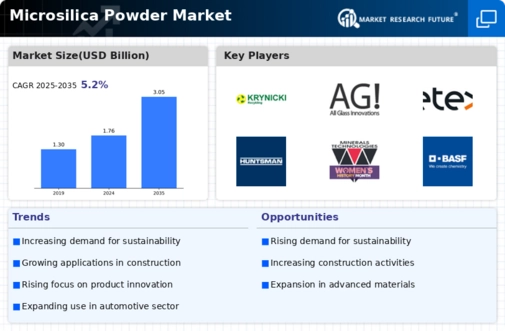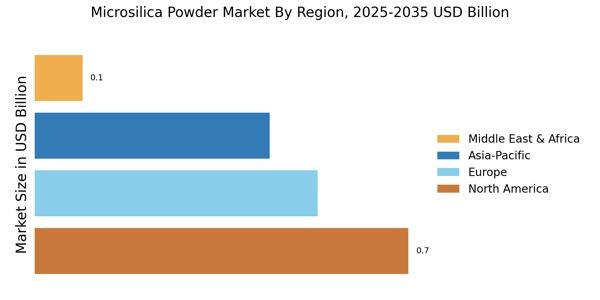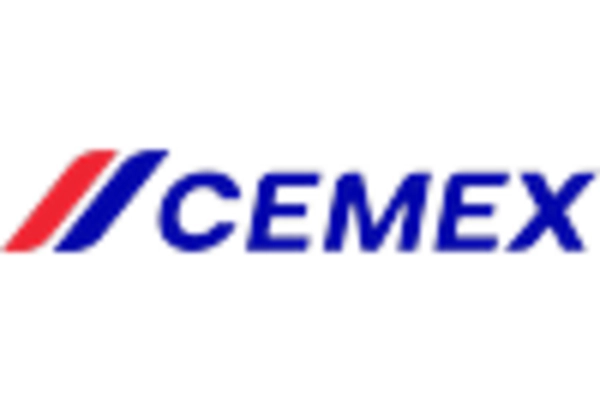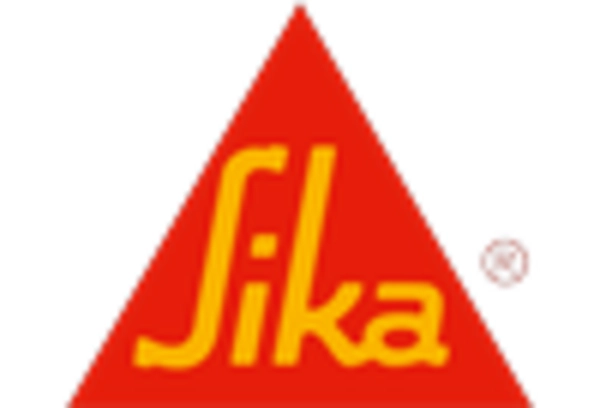Growth in the Construction Sector
The construction sector's robust growth is a significant driver for the Microsilica Powder Market. With urbanization and infrastructure development on the rise, the demand for construction materials is escalating. Recent statistics indicate that the construction industry is expected to reach a valuation of over 10 trillion by 2027, creating a substantial market for microsilica powder. This growth is attributed to various factors, including government investments in infrastructure and the increasing need for residential and commercial buildings. As construction projects become more complex, the incorporation of microsilica powder to enhance concrete properties is becoming more prevalent. This trend suggests a promising outlook for the Microsilica Powder Market as it aligns with the evolving needs of the construction landscape.
Environmental Regulations and Standards
Stringent environmental regulations are increasingly influencing the Microsilica Powder Market. Governments worldwide are implementing policies aimed at reducing carbon emissions and promoting sustainable construction practices. Microsilica powder, being a byproduct of silicon metal production, offers a sustainable alternative to traditional cement, thereby aligning with these regulations. The market data suggests that the adoption of microsilica in concrete can reduce the carbon footprint by up to 30%. As regulatory frameworks become more rigorous, the demand for eco-friendly construction materials, including microsilica, is likely to rise. This trend not only supports environmental goals but also enhances the competitive edge of companies that prioritize sustainability in their operations.
Rising Demand for High-Performance Concrete
The increasing demand for high-performance concrete is a pivotal driver in the Microsilica Powder Market. As construction projects become more ambitious, the need for materials that enhance durability and strength is paramount. Microsilica powder, known for its pozzolanic properties, significantly improves the mechanical performance of concrete. Recent data indicates that the construction sector is projected to grow at a compound annual growth rate of approximately 5.5% over the next few years, further fueling the demand for microsilica. This growth is likely to be driven by infrastructure development and urbanization trends, which necessitate the use of advanced materials. Consequently, the Microsilica Powder Market is expected to witness a surge in demand as builders and contractors seek to meet these evolving requirements.
Technological Innovations in Material Science
Technological advancements in material science are reshaping the Microsilica Powder Market. Innovations in production techniques and applications are enhancing the performance characteristics of microsilica. For instance, the development of advanced processing methods has improved the purity and reactivity of microsilica, making it more effective in concrete applications. Market data indicates that the introduction of new formulations and blends is likely to expand the range of applications for microsilica, from traditional concrete to specialized products. This evolution in technology not only boosts the performance of construction materials but also opens new avenues for growth within the Microsilica Powder Market, as manufacturers seek to leverage these advancements to meet diverse customer needs.
Increasing Awareness of Sustainable Construction Practices
The growing awareness of sustainable construction practices is a crucial driver for the Microsilica Powder Market. As stakeholders in the construction sector become more conscious of their environmental impact, there is a marked shift towards materials that promote sustainability. Microsilica powder, recognized for its ability to enhance concrete while reducing waste, is gaining traction among builders and architects. Recent surveys indicate that over 60% of construction professionals prioritize sustainability in their material choices. This trend is likely to accelerate the adoption of microsilica in various applications, as it aligns with the broader movement towards eco-friendly construction. Consequently, the Microsilica Powder Market stands to benefit from this heightened focus on sustainability, as demand for innovative and responsible materials continues to grow.


















Leave a Comment